#WHAT IS 5G TECHNOLOGY
Explore tagged Tumblr posts
Text
My entry: "A Dream: The Wave Technology: Binaural beats. Techno. Warning." - Aressida. 29.6.24
From what I have learned, every organ has a unique frequency. I understand that it's a reading, a method of diagnosing whether or not the waves in their body are out of harmony.
How can people not know this?
As I see, in the Christian community, binaural beats and binaural frequency therapy are unsettling. Binaural beats are not believed in by Christians. I did some study since I was curious as to why Christians do not accept binaural beats. It produces cross-talk via the central colosseum and at the fifth layer of the brain's no conscious (not unconscious, no conscious, get it?) area, giving it the ability to bypass the brain's black box.
The reason why beat frequencies differ is that they first put the left and right brains in hyper-drive, forcing them to develop cross-talk in order to balance out the two disparate frequencies.
In mind control conditioning and therapy, you can program someone without their knowledge or consent by using different frequencies in each ear and incorporating variance, covariance, and distortion to divide the mind. This allows for conditioning of each side or the creation of a new personality within.
For example, your gender is determined by the way your brain functions and which side of your brain makes up your beliefs and values.
Women's belief systems are filtered through the emotional center of their brains. Men are extremely logistical individuals; they sort everything through, regardless of whether it is beneficial or detrimental or right or wrong.
But they do not want that.
I realize that techno music, in particular, has been intentionally designed with disruptive "sub frequencies" and piggyback frequencies, which are frequencies that differ in the left and right ears, respectively. Because of this, the brain goes into hyperdrive and becomes extremely suggestible.
That goes for other music that you all listen to. Be weary.
In order to achieve balance, your brain needs stressors. Binaural beats trigger the brain's response to bring the 200 and 342 hertz frequencies into congruency and bring them into line at 280 hertz. However, in the process of trying to achieve balance, this creates pathways that allow stimulation to occur.
Each pair of beats is intended to influence a certain area of the body; they are not intended to pass through the ears in different locations.
Similar to, which are being used in first-world countries for frequency therapy, mostly with photon and alpha wave technologies, and to how 5G technology is destroying people's immune systems and impairing their capacity to proliferate healthy cells.
I want to learn more about the technological variables, such as heart rate variability and magnetic wave testing. I would like to study up on rift technology. It is considered cutting-edge technology for those who are knowledgeable about it.

#aressida#blog#frequency science#wave technology#what do we not know#energy reading#rift technology 1900s#brain waves#music#5g technology#we said no#no mind control bs
4 notes
·
View notes
Text
2024's Game-Changing Technologies for Metaverse Development
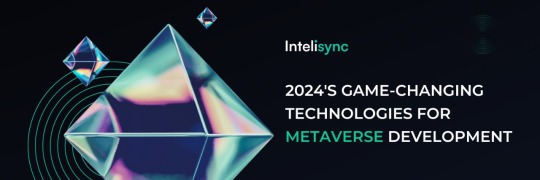
Picture a universe where virtual and physical worlds blend seamlessly, allowing you to interact with digital elements in real-time. As 2024 draws near, groundbreaking technologies are shaping this metaverse, making such interactions more immersive and dynamic than ever.
The metaverse, an expansive network of virtual environments, is evolving rapidly as we approach 2024, driven by several key technologies. Virtual Reality (VR) and Augmented Reality (AR) are at the forefront, enabling immersive experiences that blend the physical and digital worlds. VR technology has advanced significantly, offering users enhanced graphics, realistic simulations, and responsive feedback that create fully immersive digital environments.
AR enhances the physical world by overlaying digital information, enriching experiences in retail, healthcare, and entertainment through interactive and engaging environments.
Blockchain technology is essential for the metaverse, providing a secure and transparent method for managing digital assets and transactions. Non-fungible tokens (NFTs) allow users to own unique digital assets like virtual real estate and art, while smart contracts facilitate automated and secure transactions. The decentralized nature of blockchain promotes trust and reliability, making it a crucial component of the metaverse's infrastructure.
Artificial Intelligence (AI) further enhances user experiences by creating intelligent virtual agents, personalized interactions, and realistic simulations. AI-driven non-player characters (NPCs) provide engaging and adaptive experiences, and AI technologies enable natural language processing and speech recognition for seamless communication between users and virtual environments.
Edge computing and 5G technology are critical for the seamless operation of the metaverse. By bringing data processing closer to users, edge computing reduces latency and improves the responsiveness of virtual environments. 5G networks provide the high-speed internet required for real-time interactions, supporting scalable and complex virtual environments.
The Internet of Things (IoT) and spatial computing further enhance the metaverse by capturing physical movements and translating them into virtual actions, creating realistic and immersive experiences.
Elevate your business with Intelisync's cutting-edge metaverse solutions. Reach out to Intelisync today and learn how our advanced technologies in VR, AR, AI, and blockchain can revolutionize your operations, enhance customer engagement, and drive your Learn more...
#AI-driven NPCs#AR/VR for interactive product experiences#Artificial Intelligence (AI)#Augmented Reality (AR)#Blockchain#blockchain for secure transactions#Blockchain Technology#Edge Computing and 5G Technology#How Intelisync Uses this Technology for Growing Client Business#Increase in Engagement#Intelisync’s Metaverse Solution for Retail Business#Internet of Things (IoT) and Spatial Computing#IoT devices#Market Expansion#Metaverse Development#Metaverse development company#metaverse game development#Operational Efficiency#Personalization with AI#Sales Growth#Secure Transactions with Blockchain#smart contracts#social VR platforms and games.#Top 5 Technologies for Metaverse Development in 2024#Virtual Reality (VR)#Virtual Reality (VR) and Augmented Reality (AR)#Virtual Showroom#What is the Metaverse?
0 notes
Text
What 5G Means for Our Future
Introduction
Hello from TechtoIO! Let’s chat around how 5G is changing our world. This unused tech is set to revolutionize our day by day lives with unimaginable speed and connectivity. Read to Continue link
#5G advancements#5G and IoT#5G and smart cities#5G challenges#5G connectivity features#5G entertainment possibilities#5G for faster internet#5G impact on healthcare#5G in education#5G infrastructure requirements#5G job opportunities#5G network improvements#5G security concerns#5G speed comparisons#5G technology benefits#economic benefits of 5G#future of 5G#how 5G changes lives#what is 5G
1 note
·
View note
Text
youtube
The fifth generation (5G) of mobile communications networks is emerging as a revolutionary technology that will accelerate the development of smart cities and the realization of the information society. In this video, we're going to take a look at 5G and beyond the future of mobile connectivity. Let's deep dive into the video and learn more about the different types of mobile connectivity.
In recent years, the rapid evolution of mobile connectivity has transformed the way we live, work, and communicate. At the forefront of this technological revolution is the development and deployment of 5G networks, which are poised to redefine the possibilities of mobile communication and pave the way for a future that goes beyond our current understanding of connectivity.
5G, the fifth generation of mobile networks, represents a significant leap forward from its predecessor, 4G. While 4G enabled faster data speeds and improved network reliability, 5G takes this a step further by introducing unprecedented levels of speed, responsiveness, and capacity. It promises to deliver data rates that are up to 100 times faster than 4G, virtually eliminating latency, and accommodating a much larger number of connected devices simultaneously.
One of the key features of 5G is its use of higher frequency bands, including millimeter waves, which provide broader bandwidths for data transmission. This allows for the support of massive data traffic, which is particularly important in an era dominated by data-hungry applications like streaming 4K and 8K videos, virtual reality, augmented reality, and the Internet of Things. The ability of 5G to handle this increased demand for data without compromising on speed or quality is a game-changer for industries ranging from entertainment and healthcare to transportation and manufacturing.
Beyond speed and capacity, 5G also brings forth the concept of ultra-low latency or the time it takes for data to travel between devices and networks. With latency reduced to mere milliseconds, 5G opens doors to applications that were previously unattainable. For instance, remote surgery could become a reality, as surgeons could perform procedures on patients located continents away with real-time precision. Similarly, autonomous vehicles can communicate instantaneously with each other and with traffic infrastructure, significantly enhancing road safety and traffic management.
However, the evolution of mobile connectivity doesn't stop at 5G. Researchers, engineers, and innovators are already envisioning what lies beyond the capabilities of this groundbreaking technology. The concept of "Beyond 5G" or "6G" is emerging as the next frontier in mobile communication. While still in its early stages, 6G aims to push the boundaries of connectivity even further.
5G and Beyond: The Future of Mobile Connectivity
#5g network#5g and beyond#the future of mobile connectivity#5g mobile network#what is 5g#5g explained#the future of 5g#benefits of 5g technology#5g network review#5g network benefits#5g technology explained#5g introduction#5g the future of connectivity#5g the future mobile internet#5g technology#5g vs 6g#5g mobile technology#what is 5g mobile tyechnology#LimitLess Tech 888#5g internet#5g mobile internet#Youtube
1 note
·
View note
Text
I think everyone needs to experience technology in a rural area at least once in their life. I'm talking out in the boondocks, where the lines between modern and old blur in ways that almost make you believe that something else exists out there with you. Where your phone will register 5G in a spot 50 miles from any semblance of civilization but still won't load anything. Where the office computer is fully updated to the latest windows and hardwired into the internet and won't run certain programs, but only in the afternoon. Where the cell service cuts when a storm rolls overhead, and the phone lines at your work will randomly stop for a few minutes on a sunny day and IT can't figure out why so you all shrug and move on until they're working again. In a place where the home wifi router has to be wrapped in tinfoil otherwise turning on the desktop causes Netflix to stop working on the TV. Where the jokes about an entity living at your office feel a little too real, where no one truly believes in the paranormal but take the superstitions a little too seriously. Don't run this program at 4:50pm. Ask the computer nicely and it may just load what you need. Knock on wood if you joke about the phones going down today. And whatever you do, never run the microwave and the printer at the same time, even though they're on seperate circuits. We're about to head into the winter months, are you prepared? It changes your relationship with technology I think, when you've been to a place where the standard of reliance has to follow the whims of an ancient aura in the air.
#american gothic#gothic americana#old gods#cybercore#rural gothic#rural aesthetic#can't call this creative writing cause its all based on my real life experiences lol#work
625 notes
·
View notes
Text
Is the spiritual person a conspiracy theorist? A list of red flags
They talk about a shadowy group of people supposedly manipulating everything behind the scenes. They might refer to them by terms such as globalists, bankers, international bankers, secret rulers of the world, the elite, the cabal, Kabbalists, Talmudists, satanists, satanic pedophiles, pedophiles, generational satanists, satanic bloodlines, the Illuminati, the Babylonian Brotherhood, lizard people, Reptilians, Orions, regressives, regressive entities, Khazarians, Marxists, cultural Marxists, or leftists. Sometimes, very rarely, they'll just come right out and say "Jews."
They claim that the conspiracy has been working to conceal historical and spiritual truths from humanity.
They claim that the conspiracy uses stuff like food, entertainment, and medicine to control the masses. For example, "additives in food suppress our psychic abilities" or "Hollywood films contain subliminal messages" or "COVID vaccines were actually created to alter your DNA to make you more docile."
Also, claims that the conspiracy controls people via spiritual or technological implants, 5G, or alter programming, with or without explicit mention of Project Monarch (a conspiracy theory promoted by far right cranks such as Mark Philips and Fritz Springmeier, who used hypnosis to respectively convince Cathy O'Brien and Cisco Wheeler that they'd been put under mind control by a global satanic conspiracy).
They claim that this conspiracy is controlling the media, has fingers in every institution they disagree with, and is generally behind everything they disagree with. (EG, the conspiracy created the Catholic Church; that other New Ager they disagree with is actually controlled opposition, etc.)
They claim that the conspiracy is trying to keep people in fear.
They claim that the conspiracy harvests something from people. Blood and adrenochrome are common ones. Loosh is somewhat less common. Expect to see something else pop up eventually.
They claim that the conspiracy practices genetic engineering; EG, creating animal/human hybrids, using vaccines to genetically sever people's connection to God, etc.
They claim that true spiritual wisdom can be traced back to places like Atlantis, Lemuria, or Mu.
They claim that world governments have secretly been in contact with extraterrestrials for years.
They appeal to known frauds and cranks, including but not limited to Erich Von Daniken, Zechariah Sitchin, David Icke, David Wilcock, Graham Hancock, Jaime Maussan, Bob Lazar, Steven Greer, Richard C. Hoagland, Fritz Springmeier, and Drunvalo Melchizedek.
Appeals to forged documents, including but not limited to the alleged diary of Admiral Richard Byrd, The Emerald Tablets of Thoth the Atlantean, and The Urantia Book.
Appeals to channeled information, such as that provided by Edgar Cayce, Carla Rueckert, or George Van Tassel.
"But all of this has to come from somewhere, doesn't it?"
Oh, it all comes from somewhere, all right, but the where isn't what most people imagine.
A lot of the stuff above is just a modern spin on the content of The Protocols of the Learned Elders of Zion, a Russian hoax created to justify violence against Russian Jews. The Protocols itself was plagiarized from a political satire and incorporated a lot of the post-French Revolution conspiracy theories about Freemasons and Jews being behind the French Revolution. I wrote a summary of the conspiracy tropes found in The Protocols over here.
The stuff about Satanic sacrifices and the consumption of blood, adrenochrome, loosh, or whatever are simply just variations on blood libel, an antisemitic conspiracy theory that claims Jews practice ritual cannibalism. Blood libel can be traced back to ancient Greece. (With the Greek version, I really can't help but notice the similarity to modern urban legends of gangsters kidnapping random people for initiation rituals.)
Many of these tropes can also be linked back to the early modern witch hunts. It was believed that witches sacrificed babies to Satan, practiced cannibalism, and put people under mind control by way of diabolical magic. It was also believed that some witches didn't even know they were witches; they'd go off to attend the Devil's Sabbath at night and come back in the morning without remembering a thing. In the late 20th century, this witch hunter's canard would be reinvented as the alter programming conspiracy theory when media such as the 1973 book Sibyl and its 1976 television adaptation put DID (note: the woman who inspired Sibyl did not have DID) into the public consciousness. For a more complete list of witch panic and blood libel tropes, I wrote a list over here.
Lemuria was a hypothetical landmass proposed to explain the presence of lemur fossils in Madagascar and India while being absent in continental Africa and the rest of Asia, because if lemurs evolved naturally, they wouldn't be in two separate places with no connection to each other. The discovery that India and Madagascar were once connected not only made the hypothesis obsolete, it precludes the existence of Lemuria.
The whole notion of Mu began with a horrendous mistranslation of the Troano manuscript. A man named Augustus Le Plongeon would link the mistranslation with the story of Atlantis, and use it to claim that Atlantis actually existed in the Americas. (For Plongeon, Mu and Atlantis were one and the same.) And then other people (like James Churchward) got their hands on the whole Mu thing, and put their own spins on it, and the rest is history.
Le Plongeon's ideas influence modern Atlantis mythology today; EG, the idea that it was in the Americas. Another guy who helped shape the modern Atlantis myth was Ignatius L. Donnelly, an American politician. Dude claimed that Atlanteans spread their oh-so-superior culture far and wide. He also claimed that Atlantis was the home of the Aryan people, because of course he did.
The idea that all of the world's wisdom can be traced back to Thoth/Hermes goes back to Hermeticism, a product of Greco-Egyptian syncretism. Hermeticism produced a fascinating body of mythology and an interesting way to consider the divine and its role in shaping human history, but that doesn't mean it was right. And the Emerald Tablets of Thoth the Atlantean is a modern text that has fuck-all to do with ancient Hermeticism and more to do with HP Lovecraft.
This idea that the conspiracy uses pharmaceutical drugs and vaccines for evil also has roots in Nazi Germany. The Nazi government, wanting to reserve real medicine for their soldiers, told the general populace that said medicine was the product of evil Jewish science and prescribed alternative healing modalities instead. (Said alternative healing modalities did not particularly work.) It also echoes the old conspiracy theories about Jews spreading the Black Death by poisoning wells.
The idea that the conspiracy uses genetic manipulation to create subhuman beings or sever humanity from the divine is a permutation of the Nazi conspiracy theory that Jews are trying to destroy the white race through race mixing. The idea of evil reptilian DNA goes back to the ancient serpent seed doctrine, which is indeed old, but no less pure hateful nonsense for it.
"But there's got to be somebody up to something rotten out there!"
Oh sure. But these people aren't skulking around in the shadows. They're acting pretty openly.
The Heritage Foundation has been working to push this country into Christofascism since the early 1970's. They're the ones responsible for the rise of the Moral Majority and the election of Ronald Reagan. They're also the ones behind Project 2025, which intends to bring us deeper into Christofascism. (Among many other horrible things, they intend to outlaw trans people as "pornographic.")
The Seven Mountains Mandate is another movement pushing for Christofascism. They intend to seize the "seven spheres" of society, which include education, religion, family, business, government/military, arts/entertainment, and media.
There's also the ghoulish American Evangelicals who support Israel because they think that current events are going to bring about the Second Coming of Jesus and cement the formation of a global Christofascist empire. Don't let their apparent support of Jews fool you - they believe that the good Jews will become Christians and the bad ones will go to hell.
All of these people are working toward monstrously horrific goals, but none of them are part of an ancient megaconspiracy. In fact, these are the kinds of people pushing the myth of the ancient megaconspiracy. From the witch hunts to Nazi Germany to the American Evangelical movement, if history has taught us anything, the people pushing the conspiracy theories are always the bad guys.
#conspiracy theories#conspiracy theory#conspiracism#conspirituality#conspiracy theorists#conspiracy theorist#spirituality#spiritual community#red flag#red flags#spiritual red flags#spiritual red flag#atlantis#lemuria#antisemitism#witch hunts#history#pseudohistory#religion#witchblr#paganblr#occultblr#discernment
2K notes
·
View notes
Text
Utah’s getting some of America’s best broadband

TOMORROW (May 17), I'm at the INTERNET ARCHIVE in SAN FRANCISCO to keynote the 10th anniversary of the AUTHORS ALLIANCE.

Residents of 21 cities in Utah have access to some of the fastest, most competitively priced broadband in the country, at speeds up to 10gb/s and prices as low as $75/month. It's uncapped, and the connections are symmetrical: perfect for uploading and downloading. And it's all thanks to the government.
This broadband service is, of course, delivered via fiber optic cable. Of course it is. Fiber is vastly superior to all other forms of broadband delivery, including satellites, but also cable and DSL. Fiber caps out at 100tb/s, while cable caps out at 50gb/s – that is, fiber is 1,000 times faster:
https://www.eff.org/deeplinks/2019/10/why-fiber-vastly-superior-cable-and-5g
Despite the obvious superiority of fiber, America has been very slow to adopt it. Our monopolistic carriers act as though pulling fiber to our homes is an impossible challenge. All those wires that currently go to your house, from power-lines to copper phone-lines, are relics of a mysterious, fallen civilization and its long-lost arts. Apparently we could no more get a new wire to your house than we could build the pyramids using only hand-tools.
In a sense, the people who say we can't pull wires anymore are right: these are relics of a lost civilization. Specifically, electrification and later, universal telephone service was accomplished through massive federal grants under the New Deal – grants that were typically made to either local governments or non-profit co-operatives who got everyone in town connected to these essential modern utilities.
Today – thanks to decades of neoliberalism and its dogmatic insistence that governments can't do anything and shouldn't try, lest they break the fragile equilibrium of the market – we have lost much of the public capacity that our grandparents took for granted. But in the isolated pockets where this capacity lives on, amazing things happen.
Since 2015, residents of Jackson County, KY – one of the poorest counties in America – have enjoyed some of the country's fastest, cheapest, most reliable broadband. The desperately poor Appalachian county is home to a rural telephone co-op, which grew out of its rural electrification co-op, and it used a combination of federal grants and local capacity to bring fiber to every home in the county, traversing dangerous mountain passes with a mule named "Ole Bub" to reach the most remote homes. The result was an immediately economic uplift for the community, and in the longer term, the county had reliable and effective broadband during the covid lockdowns:
https://www.newyorker.com/tech/annals-of-technology/the-one-traffic-light-town-with-some-of-the-fastest-internet-in-the-us
Contrast this with places where the private sector has the only say over who gets broadband, at what speed, and at what price. America is full of broadband deserts – deserts that strand our poorest people. Even in the hearts of our largest densest cities, whole neighborhoods can't get any broadband. You won't be surprised to learn that these are the neighborhoods that were historically redlined, and that the people who live in them are Black and brown, and also live with some of the highest levels of pollution and its attendant sicknesses:
https://pluralistic.net/2021/06/10/flicc/#digital-divide
These places are not set up for success under the best of circumstances, and during the lockdowns, they suffered terribly. You think your kid found it hard to go to Zoom school? Imagine what life was like for kids who attended remote learning while sitting on the baking tarmac in a Taco Bell parking lot, using its free wifi:
https://www.wsws.org/en/articles/2020/09/02/elem-s02.html
ISPs loathe competition. They divide up the country into exclusive territories like the Pope dividing up the "new world" and do not trouble one another by trying to sell to customers outside of "their" turf. When Frontier – one of the worst of America's terrible ISPs – went bankrupt, we got to see their books, and we learned two important facts:
The company booked one million customers who had no alternative as an asset, because they would pay more for slower broadband, and Frontier could save a fortune by skipping maintenance, and charging these customers for broadband even through multi-day outages; and
Frontier knew that it could make a billion dollars in profit over a decade by investing in fiber build-out, but it chose not to, because stock analysts will downrank any carrier that made capital investments that took more than five years to mature. Because Frontier's execs were paid primarily in stock, they chose to strand their customers with aging copper connections and to leave a billion dollars sitting on the table, so that their personal net worth didn't suffer a temporary downturn:
https://www.eff.org/deeplinks/2020/04/frontiers-bankruptcy-reveals-cynical-choice-deny-profitable-fiber-millions
ISPs maintain the weirdest position: that a) only the private sector can deliver broadband effectively, but b) to do so, they'll need massive, unsupervised, no-strings-attached government handouts. For years, America went along with this improbable scheme, which is why Trump's FCC chairman Ajit Pai gave the carriers $45 billion in public funds to string slow, 19th-century-style copper lines across rural America:
https://pluralistic.net/2022/02/27/all-broadband-politics-are-local/
Now, this is obviously untrue, and people keep figuring out that publicly provisioned broadband is the only way for America to get the same standard of broadband connectivity that our cousins in other high-income nations enjoy. In order to thwart the public's will, the cable and telco lobbyists joined ALEC, the far-right, corporatist lobbying shop, and drafted "model legislation" banning cities and counties from providing broadband, even in places the carriers chose not to serve:
https://pluralistic.net/2023/03/19/culture-war-bullshit-stole-your-broadband/
Red states across America adopted these rules, and legislators sold this to their base by saying that this was just "keeping the government out of their internet" (even as every carrier relied on an exclusive, government-granted territorial charter, often with massive government subsidies).
ALEC didn't target red states exclusively because they had pliable, bribable conservative lawmakers. Red states trend rural, and rural places are the most likely sites for public fiber. Partly, that's because low-density areas are harder to make a business case for, but also because these are also the places that got electricity and telephone through New Deal co-ops, which are often still in place.
Just about the only places in America where people like their internet service are the 450+ small towns where the local government provides fiber. These places vote solidly Republican, and it was their beloved conservative lawmakers whom ALEC targeted to enact laws banning their equally beloved fiber – keep voting for Christmas, turkeys, and see where it gets you:
https://communitynets.org/content/community-network-map
But spare a little sympathy for the conservative movement here. The fact that reality has a pronounced leftist bias must be really frustrating for the ideological project of insisting that anything the market can't provide is literally impossible.
Which brings me back to Utah, a red state with a Republican governor and legislature, and a national leader in passing unconstitutional, unhinged, unworkable legislation as part of an elaborate culture war kabuki:
https://www.npr.org/2023/03/24/1165975112/utah-passes-an-age-verification-law-for-anyone-using-social-media
For more than two decades, a coalition of 21 cities in Utah have been building out municipal fiber. The consortium calls itself UTOPIA: "Utah Telecommunication Open Infrastructure Agency":
https://www.utopiafiber.com/faqs/
UTOPIA pursues a hybrid model: they run "open access" fiber and then let anyone offer service over it. This can deliver the best of both worlds: publicly provisioned, blazing-fast fiber to your home, but with service provided by your choice of competing carriers. That means that if Moms for Liberty captures you local government, you're not captive to their ideas about what sites your ISP should block.
As Karl Bode writes for Techdirt, Utahns in UTOPIA regions have their choice of 18 carriers, and competition has driven down prices and increased speeds. Want uncapped 1gb fiber? That's $75/month. Want 10gb fiber? That's $150:
https://www.techdirt.com/2024/05/15/utah-locals-are-getting-cheap-10-gbps-fiber-thanks-to-local-governments/
UTOPIA's path to glory wasn't an easy one. The dismal telco monopolists Qwest and Lumen sued to put them out of business, delaying the rollout by years:
https://www.deseret.com/2005/7/22/19903471/utopia-responds-to-qwest-lawsuit/
UTOPIA has been profitable and self-sustaining for over 15 years and shows no sign of slowing. But 17 states still ban any attempt at this.
Keeping up such an obviously bad policy requires a steady stream of distractions and lies. The "government broadband doesn't work" lie has worn thin, so we've gotten a string of new lies about wireless service, insisting that fiber is obviated by point-to-point microwave relays, or 5g, or satellite service.
There's plenty of places where these services make sense. You're not going to be able to use fiber in a moving car, so yeah, you're going to want 5g (and those 5g towers are going to need to be connected to each other with fiber). Microwave relay service can fill the gap until fiber can be brought in, and it's great for temporary sites (especially in places where it doesn't rain, because rain, clouds, leaves and other obstructions are deadly for microwave relays). Satellite can make sense for an RV or a boat or remote scientific station.
But wireless services are orders of magnitude slower than fiber. With satellite service, you share your bandwidth with an entire region or even a state. If there's only a couple of users in your satellite's footprint, you might get great service, but when your carrier adds a thousand more customers, your connection is sliced into a thousand pieces.
That's also true for everyone sharing your fiber trunk, but the difference is that your fiber trunk supports speeds that are tens of thousands of times faster than the maximum speeds we can put through freespace electromagnetic spectrum. If we need more fiber capacity, we can just fish a new strand of fiber through the conduit. And while you can increase the capacity of wireless by increasing your power and bandwidth, at a certain point you start pump so much EM into the air that birds start falling out of the sky.
Every wireless device in a region shares the same electromagnetic spectrum, and we are only issued one such spectrum per universe. Each strand of fiber, by contrast, has its own little pocket universe, containing a subset of that spectrum.
Despite all its disadvantages, satellite broadband has one distinct advantage, at least from an investor's perspective: it can be monopolized. Just as we only have one electromagnetic spectrum, we also only have one sky, and the satellite density needed to sustain a colorably fast broadband speed pushes the limit of that shared sky:
https://spacenews.com/starlink-vs-the-astronomers/
Private investors love monopoly telecoms providers, because, like pre-bankruptcy Frontier, they are too big to care. Back in 2021, Altice – the fourth-largest cable operator in America – announced that it was slashing its broadband speeds, to be "in line with other ISPs":
https://pluralistic.net/2021/06/27/immortan-altice/#broadband-is-a-human-right
In other words: "We've figured out that our competitors are so much worse than we are that we are deliberately degrading our service because we know you will still pay us the same for less."
This is why corporate shills and pro-monopolists prefer satellite to municipal fiber. Sure, it's orders of magnitude slower than fiber. Sure, it costs subscribers far more. Sure, it's less reliable. But boy oh boy is it profitable.
The thing is, reality has a pronounced leftist bias. No amount of market magic will conjure up new electromagnetic spectra that will allow satellite to attain parity with fiber. Physics hates Starlink.
Yeah, I'm talking about Starlink. Of course I am. Elon Musk basically claims that his business genius can triumph over physics itself.
That's not the only vast, impersonal, implacable force that Musk claims he can best with his incredible reality-distortion field. Musk also claims that he can somehow add so many cars to the road that he will end traffic – in other words, he will best geometry too:
https://pluralistic.net/2022/10/09/herbies-revenge/#100-billion-here-100-billion-there-pretty-soon-youre-talking-real-money
Geometry hates Tesla, and physics hates Starlink. Reality has a leftist bias. The future is fiber, and public transit. These are both vastly preferable, more efficient, safer, more reliable and more plausible than satellite and private vehicles. Their only disadvantage is that they fail to give an easily gulled, thin-skinned compulsive liar more power over billions of people. That's a disadvantage I can live with.

If you'd like an essay-formatted version of this post to read or share, here's a link to it on pluralistic.net, my surveillance-free, ad-free, tracker-free blog:
https://pluralistic.net/2024/05/16/symmetrical-10gb-for-119/#utopia

Image: 4028mdk09 (modified) https://commons.wikimedia.org/wiki/File:Rote_LED_Fiberglasleuchte.JPG
CC BY-SA 3.0 https://creativecommons.org/licenses/by-sa/3.0/deed.en
338 notes
·
View notes
Text
The Metaverse: A New Frontier in Digital Interaction

The concept of the metaverse has captivated the imagination of technologists, futurists, and businesses alike. Envisioned as a collective virtual shared space, the metaverse merges physical and digital realities, offering immersive experiences and unprecedented opportunities for interaction, commerce, and creativity. This article delves into the metaverse, its potential impact on various sectors, the technologies driving its development, and notable projects shaping this emerging landscape.
What is the Metaverse?
The metaverse is a digital universe that encompasses virtual and augmented reality, providing a persistent, shared, and interactive online environment. In the metaverse, users can create avatars, interact with others, attend virtual events, own virtual property, and engage in economic activities. Unlike traditional online experiences, the metaverse aims to replicate and enhance the real world, offering seamless integration of the physical and digital realms.
Key Components of the Metaverse
Virtual Worlds: Virtual worlds are digital environments where users can explore, interact, and create. Platforms like Decentraland, Sandbox, and VRChat offer expansive virtual spaces where users can build, socialize, and participate in various activities.
Augmented Reality (AR): AR overlays digital information onto the real world, enhancing user experiences through devices like smartphones and AR glasses. Examples include Pokémon GO and AR navigation apps that blend digital content with physical surroundings.
Virtual Reality (VR): VR provides immersive experiences through headsets that transport users to fully digital environments. Companies like Oculus, HTC Vive, and Sony PlayStation VR are leading the way in developing advanced VR hardware and software.
Blockchain Technology: Blockchain plays a crucial role in the metaverse by enabling decentralized ownership, digital scarcity, and secure transactions. NFTs (Non-Fungible Tokens) and cryptocurrencies are integral to the metaverse economy, allowing users to buy, sell, and trade virtual assets.
Digital Economy: The metaverse features a robust digital economy where users can earn, spend, and invest in virtual goods and services. Virtual real estate, digital art, and in-game items are examples of assets that hold real-world value within the metaverse.
Potential Impact of the Metaverse
Social Interaction: The metaverse offers new ways for people to connect and interact, transcending geographical boundaries. Virtual events, social spaces, and collaborative environments provide opportunities for meaningful engagement and community building.
Entertainment and Gaming: The entertainment and gaming industries are poised to benefit significantly from the metaverse. Immersive games, virtual concerts, and interactive storytelling experiences offer new dimensions of engagement and creativity.
Education and Training: The metaverse has the potential to revolutionize education and training by providing immersive, interactive learning environments. Virtual classrooms, simulations, and collaborative projects can enhance educational outcomes and accessibility.
Commerce and Retail: Virtual shopping experiences and digital marketplaces enable businesses to reach global audiences in innovative ways. Brands can create virtual storefronts, offer unique digital products, and engage customers through immersive experiences.
Work and Collaboration: The metaverse can transform the future of work by providing virtual offices, meeting spaces, and collaborative tools. Remote work and global collaboration become more seamless and engaging in a fully digital environment.
Technologies Driving the Metaverse
5G Connectivity: High-speed, low-latency 5G networks are essential for delivering seamless and responsive metaverse experiences. Enhanced connectivity enables real-time interactions and high-quality streaming of immersive content.
Advanced Graphics and Computing: Powerful graphics processing units (GPUs) and cloud computing resources are crucial for rendering detailed virtual environments and supporting large-scale metaverse platforms.
Artificial Intelligence (AI): AI enhances the metaverse by enabling realistic avatars, intelligent virtual assistants, and dynamic content generation. AI-driven algorithms can personalize experiences and optimize virtual interactions.
Wearable Technology: Wearable devices, such as VR headsets, AR glasses, and haptic feedback suits, provide users with immersive and interactive experiences. Advancements in wearable technology are critical for enhancing the metaverse experience.
Notable Metaverse Projects
Decentraland: Decentraland is a decentralized virtual world where users can buy, sell, and develop virtual real estate as NFTs. The platform offers a wide range of experiences, from gaming and socializing to virtual commerce and education.
Sandbox: Sandbox is a virtual world that allows users to create, own, and monetize their gaming experiences using blockchain technology. The platform's user-generated content and virtual real estate model have attracted a vibrant community of creators and players.
Facebook's Meta: Facebook's rebranding to Meta underscores its commitment to building the metaverse. Meta aims to create interconnected virtual spaces for social interaction, work, and entertainment, leveraging its existing social media infrastructure.
Roblox: Roblox is an online platform that enables users to create and play games developed by other users. With its extensive user-generated content and virtual economy, Roblox exemplifies the potential of the metaverse in gaming and social interaction.
Sexy Meme Coin (SEXXXY): Sexy Meme Coin integrates metaverse elements by offering a decentralized marketplace for buying, selling, and trading memes as NFTs. This unique approach combines humor, creativity, and digital ownership, adding a distinct flavor to the metaverse landscape. Learn more about Sexy Meme Coin at Sexy Meme Coin.
The Future of the Metaverse
The metaverse is still in its early stages, but its potential to reshape digital interaction is immense. As technology advances and more industries explore its possibilities, the metaverse is likely to become an integral part of our daily lives. Collaboration between technology providers, content creators, and businesses will drive the development of the metaverse, creating new opportunities for innovation and growth.
Conclusion
The metaverse represents a new frontier in digital interaction, offering immersive and interconnected experiences that bridge the physical and digital worlds. With its potential to transform social interaction, entertainment, education, commerce, and work, the metaverse is poised to revolutionize various aspects of our lives. Notable projects like Decentraland, Sandbox, Meta, Roblox, and Sexy Meme Coin are at the forefront of this transformation, showcasing the diverse possibilities within this emerging digital universe.
For those interested in the playful and innovative side of the metaverse, Sexy Meme Coin offers a unique and entertaining platform. Visit Sexy Meme Coin to explore this exciting project and join the community.
275 notes
·
View notes
Note
Do you think the stuff in the field guide to monkeywrenching is still applicable today+do you know of any other sort of 'all encompassing' books like it except with modern technological information?
There's a fascist zine put out by former atomwaffen dudes that's all about this. A lot of the stuff in the monkey wrench guide is still good, but a lot of the stuff about heavy machinery is no longer applicable. Earth First has some guides up, but what I really recommend is going to their gatherings. They have hands on workshops. If you're in America, the national summer gathering happens every 4th of July week. In the UK I think the winter gathering just happened. There's also regional gatherings happening all the time.
I'm not linking the fascist one. That's beyond fedposting, that thing is linked to like 3 murders.
325 (RIP), an insurrectionary anarchist infosite shut down by UK authorities, used to have anti-5g guides. Oh, I know. Use vpn's.
And I think Dark Nights has guides. A lot of the anarchist sites that had guides no longer exist.
82 notes
·
View notes
Text
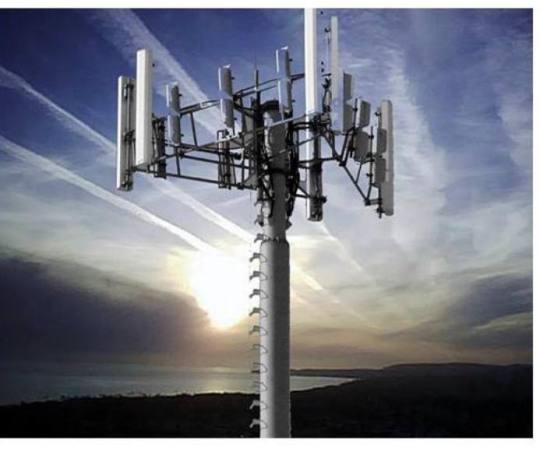
Here’s how Voice to Skull (V2K)works…
Out of nowhere, the targeted victim of this technology will hear a “voice.”
The skull has no “firewall” and therefore cannot shut the voice out.
That voice can be transmitted at different frequencies…some of which are audible to the conscious mind…and some not.
These are HYPNOTIST’s voices…sending out “suggestions.”
Some of these “suggestions” are sexual in nature, in order to satisfy ((their)) sick agenda.
Most people know that grocery stores will play music that contains subliminal messages.
That technology has been around for a long time.
What people don’t know is that the same technique is being used on their mind!!
Voice-to-skull
V2K.
This is MIND CONTROL!!
Most often it’s being used to get you to buy, buy, buy!
They use this same technology in
•video games,
•tv shows,
•movies, and
•music.
The attempt is for control! 👇
If you want to löök into this further? I recommend you löök up; WBAN (wide body area network) and I know there are many patent numbers for all of this kind of technology. Including 5g. 🤔
#pay attention#educate yourselves#educate yourself#knowledge is power#reeducate yourselves#reeducate yourself#think about it#think for yourselves#think for yourself#do your homework#do your research#do some research#do your own research#ask yourself questions#question everything#mind control#frequencies#control#government corruption#evil lives here
104 notes
·
View notes
Note
what do you like about cars?
I think you knew, upon asking this, that I could only ever have answered with either an ironic one-liner or a dozen-part novel. And unfortunately, this is already the second line, so novel it is. So then, without any further ado than the literal half year that’s gone by since this was asked, let's go.
1. Engineering matters
At the end of last year (aka when I started writing this, yikes) my dear old iPhone 6S moved on to a new home because it simply wasn't keeping up with me anymore. (And again, I was using an iPhone 6S in 2023. If I say a phone is too slow, it's too slow.) I had plenty of criteria for the replacement: a smallish screen not overboard on resolution, ideally a physical media control button and/or vibration toggle, repairability, a FUCKING AUX JACK... Something like the Sony Xperia 10, whose only real issue is marketing so trash you've only just now learned Sony never stopped making phones.
And yet...
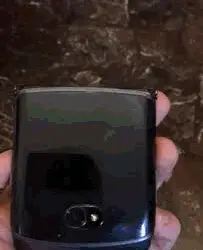
This fancy wallpapers-sporting foldable is a Motorola RAZR 5G, a phone whose too-big screen already broke (though at the edge due to adhesive issues) and those who dared try warn repairing it will be as hard as phone repairs get. Why the fuck did I buy this? Well, because it has something more important than the aux jack, proper sizing, and good cameras: it made me go “That’s so cool!”, and when’s the last time a phone made you say that? It's the cusp of a new technology, and whether it becomes the future of phones, a future of phones, or just a weird footnote, it is an island of interesting in a sea of boring. And sadly, even this island is rapidly sinking. The drive for new form factors has already boiled down to the same two phones and their evolution is sinking into the usual millimetric proportion tweaking, camera rearranging, touchscreen expanding, case material switching, fingerprint sensor moving, and spec improvements not even manufacturers can come up with use cases for. I mean, seriously, how does the iPhone 15 differ from a software-updated iPhone X (which is apparently not pronounced "x", so I guess the iPhone Twitter)? Nothing is new. Nothing is tackled differently. The user experience does not differ. And why should it, when iPhone users will get a new one out of habit anyway and many are so tech illiterate moving a button could hospitalize them? Five generation newer and 150% faster are numbers you basically have to trust, because they don't make a difference that matters.
But in cars? 150% faster will matter alright. Even just looking at it. Cars are a visceral experience to even witness, let alone ride in or drive, and the frantic engineering pursuits for performance and overall capability actually have impactful real world implications beyond "some pockets will bulge 1mm less". And their engineering involves so many fields that there’s always a breakthrough going on somewhere - which leads to another reason their engineering is so interesting: there’s simply so much of it that anyone interested in engineering will find something for them, no matter their level or sector of expertise! Interested in mechanics? Well, obviously you’ll have a field day! Aerodynamics? Don't even get me started! Electronics? You're getting more goods by the year! It spread from engine management to safety assists to infotainment to ergonomic adjustments to even suspension and aerodynamics! Sound design? Even just working on the way engines sound is a profession of its own, let alone making these barrels of metal and glass propelling themselves at triple digit speeds through hundreds of explosions a second things you can comfortably have a conversation in - and that's not even mentioning horns and chimes! Hi-Fi? We’ve spent most of a century trying to get concert hall sound from a tiny tin can where everyone sits off-center and everything bumps and shakes around and you have maybe room for two components* a third the normal size and speakers can only be in a handful of places you wouldn’t want them which may well be the next room over**!
And this is just engineering.
*Like everything in the car world, there are exceptions to that
**For those unfamiliar, subwoofers, the speakers dedicated to, indeed, sub-bass, due to their frequent humongousness are often installed in the trunk.
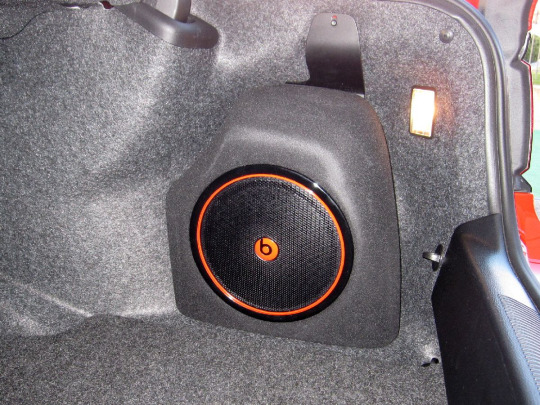
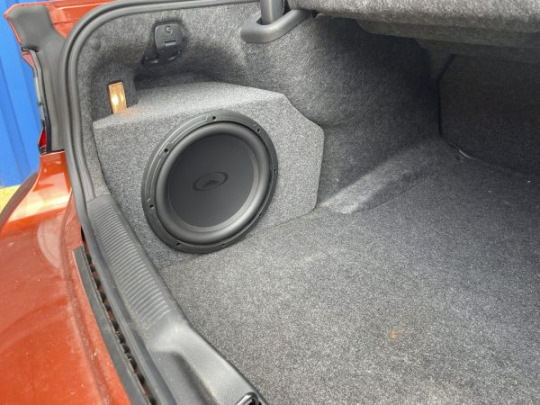

#stay tuned for part 2!#sony phones *are* great btw#they are sold in actual colors and they're full of cool features#their aux jack can double as a stereo input!!!
105 notes
·
View notes
Text
Shui Long Yin VR Metaverse: Technologies and Digital Assets, and the melon about it being released in Summer 2025

What is the metaverse?
The Shui Long Yin metaverse is a parallel world closely resembling the real world, built through the use of digital modelling and technologies such as VR and AR, and designed to exist permanently.
This virtual realm integrates cutting-edge advancements, including blockchain, augmented reality, 5G, big data, artificial intelligence, and 3D engines.
When you acquire a ticket to this world, you gain a digital asset, allowing you to become an immersive citizen within the Shui Long Yin Metaverse.
Every item within Shui Long Yin can be experienced through Augmented Reality using VR devices, providing a seamless blend of the physical and digital realms. These digital assets are permanent, and in some cases, overseas users may trade or transfer their tickets to enter the Shui Long Yin world.

What is VR and AR?
Virtual Reality (VR) is a technology that enables users to interact within a computer-simulated environment.
Augmented Reality (AR), on the other hand, combines elements of VR by merging the real world with computer-generated simulations. A well-known example of AR is the popular game Pokémon Go, where virtual objects are integrated into real-world surroundings.

Tang LiCi's universe
The Shui Long Yin film crew has digitally modeled the core art assets, 50 000 square meters.

What technologies does China Mobile & Migu bring to the table?
China Mobile served as the lead organizer for the 2023 World VR Industry Conference. Its subsidiary, Migu, has also been dedicated to advancing projects in this area.
Shui Long Yin is their first priority this summer 2025.
5G+AI: VR world in Metaverse
AIGC AR 3D: Using AI technology in graphics computer, with the best trained AI system in China.
Video ringtones as a globally pioneering service introduced by China Mobile.
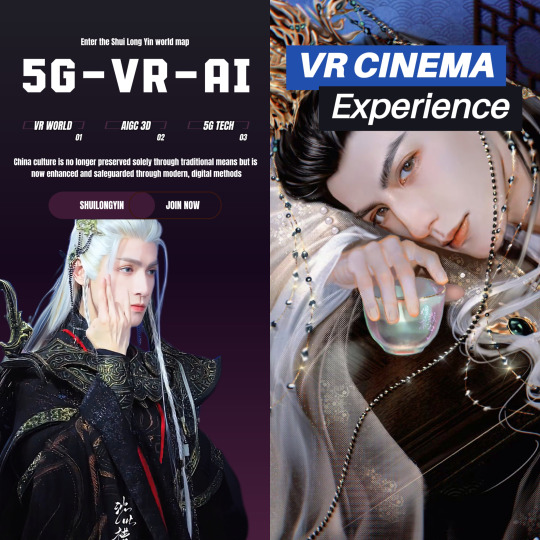
Shui Long Yin from Screen to Metaverse to Real Life: Epic Battles and Intricate Plotlines
The United States and China are world pioneers in the development of TV drama integration VR Metaverse. Notably, Shui Long Yin is the sixth TV drama map worldwide to be merged into the Metaverse.
How can we enjoy these technologies?
-- First we need 5G -- According to a report by the Global Mobile Suppliers Association (GSA), by June 2022:
》There are 70 countries around the world had active 5G networks, you can fully experience all the technology featured in Shui Long Yin.
Example: South Korea, China, and the United States have been at the forefront. Follow after are Japan, United Kingdom, Switzerland, Australia, Taiwan, United Arab Emirates, Saudi Arabia, Viet Nam...
》No worries—even in countries without 5G, you can still watch the drama and enjoy AIGC and 3D technology through the streaming platforms Migu Video and Mango.
•Mango available on IOS and Android, Harmony OS
•Migu (Mobile HD) soon availabe on IOS and Android, Harmony OS
-- Second, we need VR devices --
In country where VR is already commonplace, such as the United States, owning a VR device is considered entirely normal. Users can select devices that best suit their preferred forms of home entertainment.
European countries have also become fairly familiar with VR technology.
However, it is still relatively new to many parts of Asia. When choosing a VR device, it’s important to select one that is most compatible with your intended activities, whether that’s gaming, watching movies, or working.

It's no surprise to us that the drama Shui Long Yin will be released in the summer 2025, but it will also be coinciding with offline tourism to Long Yin Town in Chengdu, online VR Metaverse travel, and 3D experiences on the new streaming platforms Migu and Mango. Stay tuned!
Tv drama: SHUI LONG YIN Shui Long Yin & Leo All music and image are copyrighted and belong to the respective owners, included the official film crew SHUILONGYIN.
#shui long yin#tang lici#水龙吟#唐俪辞#luo yunxi#luo yun xi#leo luo#罗云熙#cdrama#chinese drama#long yin town#long yin town vr
5 notes
·
View notes
Text
The Synthetic Chronosphere
Accelerated Aging Through The Lens of Neo-Technomagick
In an age where modern therapies promise longevity and health optimization, why does it feel as though humanity is aging faster than ever before? Wrinkles appear sooner, fatigue sets in earlier, and even the youngest and wealthiest among us seem prematurely weighed down by the burdens of time. Could it be more than just stress or environmental factors? Neo-Technomagick offers an alternative perspective— one that suggests we may be ensnared in a metaphysical construct designed to accelerate our biological clocks while obscuring the true nature of time and vitality.
The Neo-Technomagick Framework
Neo-Technomagick embraces the interplay of technology, consciousness, and metaphysics, delving into the shadowy intersections of science and spirit. It is within this framework that we propose the "Synthetic Chronosphere Hypothesis"—a theory suggesting that humanity has been subtly and systematically entrapped in an artificial temporal matrix that manipulates perception, energy, and biology to the detriment of human sovereignty.
The Synthetic Chronosphere Hypothesis
1. Temporal Compression and Technological Control
Modern digital technologies have redefined how we experience time. Constant connectivity, endless streams of information, and the relentless demands of productivity create an experience of "temporal compression." This is more than psychological; quantum theories suggest that consciousness itself influences time. By fracturing our focus and overloading our cognitive bandwidth, we may inadvertently accelerate our biological perception of aging, resulting in physical manifestations.
In this light, technology becomes not just a tool but a subtle agent of temporal manipulation, tethering human awareness to an artificially fast-paced rhythm.
2. Electromagnetic Sabotage
The human body operates within an electromagnetic symphony, its bioenergetic fields attuned to Earth's natural frequencies. But the proliferation of electromagnetic technologies—5G networks, Wi-Fi, and satellite constellations—may disrupt these natural harmonics. Ancient cultures understood the power of resonance and designed their sacred sites to amplify Earth’s healing frequencies. Could modern infrastructure deliberately counteract this harmony, accelerating cellular degradation and aging?
Neo-Technomancers might find echoes of this manipulation in historical shifts. What knowledge of resonance and longevity was lost—or suppressed—when industrialized societies severed their ties to nature and the spiritual/ magickal realms?
3. Epigenetic Warfare
Neo-Technomagick invites us to question the dual nature of modern health advancements. Pharmaceuticals, genetically modified foods, and even certain therapies may conceal an insidious agenda: embedding epigenetic triggers that subtly sabotage our biology. Nanotechnology, present in everything from vaccines to processed foods, could act as silent agents of cellular disruption, eroding our innate resilience.
This theory resonates with alternative histories that suggest humanity’s genetic template was once more robust—an inheritance from advanced civilizations like Atlantis or Lemuria. The systematic weakening of our DNA, whether intentional or incidental, could explain the widespread perception of premature aging today.
4. The Artificial Chronosphere and Time's Manipulation
Beyond the physical lies the metaphysical. Parapsychological theories suggest humanity has been cut off from natural cycles of time, confined within a "Synthetic Chronosphere" engineered by a technocratic elite. Time, once fluid and multidimensional, has been rigidly linearized, trapping consciousness within an artificial construct that accelerates entropy.
By aligning ourselves with the Chronosphere, we surrender our vitality. Ancient mystics and magicians, operating outside this paradigm, accessed timeless states of being, achieving longevity by syncing with natural cosmic rhythms.
5. Loosh Theory and Energetic Harvesting
The Neo-Technomagick framework also considers the possibility of energetic harvesting. Could the stress, fear, and despair permeating modern life be deliberately amplified to extract "loosh"—subtle energy emitted through human suffering? Accelerated aging, under this lens, becomes a byproduct of living in a state of chronic energetic depletion, our life force siphoned away by unseen entities or forces.
Neo-Technomantic Solutions
Neo-Technomagick encourages us not only to recognize these manipulations but to resist and transcend them. How?
Resonance Restoration: Explore sound therapy, binaural beats, and ancient resonance techniques to retune the bioenergetic field. Devices that generate Schumann frequencies or Tesla-inspired technologies may help reestablish harmony with Earth’s natural rhythms.
Chronomantic Practices: Engage in meditations and rituals that reconnect with natural cycles of time, sidestepping the artificial rhythms imposed by modern society. Time-bending exercises can disrupt the influence of the Synthetic Chronosphere.
Energetic Sovereignty: Cultivate energetic protection through practices such as visualization, shielding, and rituals designed to fortify the life force against external siphoning.
Epigenetic Crafting: Incorporate foods, herbs, and supplements that repair and enhance DNA integrity. Ancient practices like fasting and herbalism can support genetic resilience.
Alternative Knowledge Revival: Dive into the suppressed histories of Atlantis, Lemuria, and other ancient civilizations. Their secrets may hold the keys to reversing the damage done to humanity's natural vitality.
Conclusion
Accelerated aging may not simply be the result of stress or environmental toxins; rather, it is the physical manifestation of deeper manipulations—of time, energy, and perception. Through the lens of Neo-Technomagick, we see the interconnectedness of technological interference, metaphysical sabotage, and the fracturing of ancient wisdom. Yet, in this darkness, there is hope. By reclaiming our energetic, technological and temporal sovereignty, we can reverse the tides and embrace a future unbound, untamed, and blazing.
Are you ready to take the first step toward liberation?
G/E/M (2024)
#technomancy#neotechnomagick#cyber witch#cyberpunk#chaos magick#magick#neotechnomancy#neotechnomancer#ageing#psychology#stress#mental#premature aging
7 notes
·
View notes
Text
Scams, Hoaxes, Conspiracy Theories, & Cults Everyone Should Know About
Jilly Juice: Jillian Mai Thi Epperly claimed drinking sixteen cups of her super salty cabbage concoction each day could regrow missing limbs and cure everything from cancer to homosexuality. In reality, overdosing on so much salt caused followers a host of health issues that Epperley dismissed as "healing symptoms."
Nonhuman Body Hoax: Jaime Maussan attempted to pass off mummified human remains as nonhuman beings to the Mexican government. (This isn't even Maussan's first hoax, by the way. He has a history.)
Love Has Won: Amy Carlson, a woman who'd walked out on her own children, started a New Age cult in which she presented herself as "Mother God," the creator of the universe. She claimed to be in contact with dead celebrities and alien beings, and taught a conspiratorial worldview. As her health declined, she attempted to treat herself with colloidal silver and alcohol, and her behavior became increasingly abusive. When she finally died, her followers sincerely believed she would return to life and kept her body in a sleeping bag. (She did not return to life.)
Seed Faith Offerings: Reverend Gene Ewing came up with the perfect get-rich-quick scheme to prey on desperate Christian believers: tell believers that if they "sowed seed" by giving money to him, God would bless them with even more money in the future. He made millions of dollars from these donations, while most of his followers never saw the miraculous returns they were promised.
William Walker Atkinson: In the early 20th century, William Walker Atkinson wrote around one hundred books, many of which he wrote under various pseudonyms. Some of these pseudonyms included alleged Hindu mystics. That's right - this guy was practicing literary brownface to sell his mystical ideas.
The LDS Church: In the 19th century, a man named Joseph Smith claimed that an angel had told him where to dig up a set of golden plates that were supposedly written by ancient Hebrews who'd come to North America. Smith even had eleven close associates who vouched for the plates' existence. Yet the script they were allegedly written in bore no relation to actual ancient scripts of the Near East, and the the names the locations in the books he "translated" were very obviously derived from placenames he would have been familiar with. (For example, Oneida/Onidah.) Oh, and actual archaeology and DNA studies have discredited pretty much everything from this guy's weird racist narrative.
Fake Cancer, Fake Cure: Wellness entrepreneur Belle Gibson claimed that she'd cured her brain cancer with natural remedies. Gibson never actually had cancer in the first place.
Medbeds: Back in 2020, QAnons and QAnon-adjacent people started circulating claims that a new form of healing technology was about to become available to the public within the next several months or so. Depending on who you asked, Donald Trump, Elon Musk, and even the Galactic Federation of Light were involved. The time of their supposed unveiling came and went, and what do you know, there are still no functioning medbeds used in actual medicine.
COVID Vaccine Zombies: Conspiracy theorists have been claiming the government practices high-tech mind control for ages now. One recent iteration of this is a conspiracy theory claiming that people who'd received COVID vaccinations would have malicious DNA code activated by 5G on October 4, 2023, turn into zombies, and riot. The time came and went, and no zombie outbreak happened.
Ms.Scribe: In the early 2000s, a Harry Potter fan known as "msscribe" or "Ms.Scribe" faked her own harassment through a number of sockpuppets, with the apparent goal of becoming friends with some Harry Potter fandom bigwigs. She manipulated the fandom for a few years until the deception was finally uncovered.
315 notes
·
View notes
Text
by #TBOT: Take Back Our Tech
Ever drive a new car and see that it slows itself down when you get close to the car in front of you? That's an automatic emergency braking (AEB) system, something that automakers 'voluntarily' started putting in all vehicles.
The US National Highway Traffic Safety Administration is requiring all cars to be able to stop and avoid contact with the car in front of them at 62 mph. Automakers see this as an impossible task.
Large auto insurance co-op AAA released a research report showing that newer cars with AEB (2024) were twice as likely to avoid a collision than a 2017 vehicle at speeds of 34 mile per hour.
These newer systems use both camera and radar. What most people don't realize is the radar emits extremely high frequency mmWave technology typically above 50 Ghz.
Doing some research I found AEB radar companies advertising anywhere from 60-80 GHz. The average radiation coming from a microwave oven is about 2.5 GHz - most people are sitting next to something emitting far more dense radiation. And type of radiation is going to be all over our roadways.
Yes the NHTSA suggests in their studies that AEB systems can lower rear-end crashes by 49%, but at what cost to our long term health?
As Bioinitiative 2012 points out, "Health consequences have not been identified nor been factored into public safety limits" for new 5G wireless technologies. There is already a mountain of studies indicating negative bioeffects for the lower frequencies.
Can we find a better way to prevent accidents besides surveillance and extreme radiation?
8 notes
·
View notes
